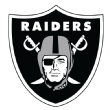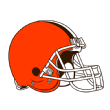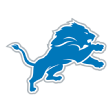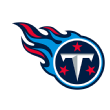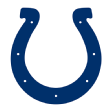Dak Prescott, Cam Newton and the NFL players and coaches who have the most to gain and lose in 2020

As strange as the 2020 NFL season is likely to be, there are players and coaches who have a disproportionate amount of their futures riding on how they perform over the next few months. It wouldn't have been anybody's choice to have their career path tied to such an uncertain season, but that's the reality of 2020 because of the coronavirus pandemic. Just like any other season, there are people around the league who can either make millions of dollars and affirm their professional legacy with a big six months or work their way toward falling out of their current roles.
Let's take a look at the players and coaches across the NFL with the most to gain or lose in the upcoming season. Those benefits could be more money, job security and/or affirming their prior decisions. This time last year, nobody would have guessed Ryan Tannehill was about to lock up more guaranteed money than Tom Brady, Philip Rivers, Cam Newton and Marcus Mariota combined, but that's what happened after Tannehill excelled with theTennessee Titansand each of those other four passers took a step backward.
There are four archetypes that typically pop up as particularly leveraged in a given season. Let's run through them and start with the players who always have the most to gain or lose because their financial upside is head and shoulders above the pack:
Jump to a section:
The quarterbacks
Vets just holding on
Coaches under fire
Players who could get paid
The quarterbacks
Dak Prescott, Dallas Cowboys
Prescott finds himself at a unique crossroads after being franchise-tagged for $31.4 million in 2020. The Cowboys would typically feel comfortable franchising him again in 2021, and I suspect they'll do so as a last resort, but the league's short-term cap issues make that a problem. Prescott would get $37.7 million for a second tag, which will hurt a lot more given that the cap will be reduced to $175 million. Dallas was likely projecting a cap number for 2021 at around $210 million; with the cap shrinking, the team would be locking up the equivalent of $45.2 million in cap space to pay Prescott next year.
So, 2020 could go one of three ways.
If Prescott struggles or gets injured, the Cowboys might be inclined to move on altogether if they can't get a deal done.
If Prescott plays like he did in 2019, when he threw for 4,902 yards and 30 touchdowns, the Cowboys will probably just go with a second tag and try to negotiate an extension before the July 15 deadline. Prescott would lock up another $37.7 million, but he wouldn't be in position to get the sort of guarantee Tannehill received this offseason.
If Prescott excels and has an MVP-caliber campaign, though, the Cowboys will probably have no choice but to do a new extension -- and with much less leverage than they had after 2018 or 2019. He isn't going to get and doesn't appear to want a Patrick Mahomes-style contract, but he would probably be able to beat Mahomes in the short term. As I wrote about in July, so much of Mahomes' guaranteed money comes well into the future, starting with a $49.4 million roster bonus paid in 2027. We might even have the Prescott vs. Carson Wentz debate settled by then.
Between 2021 and 2024, Mahomes will take home $130.7 million, for an average of about $32.7 million per season. Prescott should be able to comfortably top that. While Mahomes' deal averages $45 million per season, my guess is that Prescott will try to become the first quarterback in the league to actually take home $40 million per year if he has a huge 2020 campaign. A four-year, $160 million deal with $100 million guaranteed isn't out of the question.
Cam Newton, New England Patriots
Newton might see Tannehill as the example of how to get back on track. While the former Dolphins starter didn't hit Newton's heights as an MVP or make a Super Bowl appearance, Tannehill was considered a solid starter before injuries took their toll and cost him part or all of three consecutive seasons. Tannehill took a pay cut as part of his trade to the Titans, but when he got an opportunity, he played the best football of his career and earned a four-year contract with three guaranteed years.
Newton finds himself in a similar boat, having struggled through an injury-hit second half in 2018 before losing 2019 to a foot injury. And like Tannehill, Newton could turn things around and get a much bigger deal with one impressive season. Tannehill ended up in an excellent landing spot, since Tennessee had soured on Marcus Mariota and benched him after the first slow stretch of the season. Newton should be able to beat out Jarrett Stidham for the starting job, and while the Patriots' defense can't be as good as it was a year ago, a healthy Newton could lead the Pats to another division title. If he pulls that off, he is going to get a multiyear deal -- from the Patriots or another team.
Derek Carr, Las Vegas Raiders
Of course,Mariota now finds himself in the position Tannehill was a year ago, with the opportunity to replace a starting quarterback as a high-profile backup and revive his career in a new city. Mariota could easily qualify for this list, although the Raiders were able to get him under contract for a second season as part of his two-year, $17.6 million deal.
Carr supporters might argue that he doesn't deserve to be compared to Mariota, and they might have a point. The Raiders starter was better than his reputation a year ago, as he completed nearly 71% of his passes, averaged 7.9 yards per attempt, protected the football and ranked in the top 10 in both passer rating and Total QBR. A report this week suggested that Las Vegas coach Jon Gruden likes Carr more than "people at the very top of the organization." Given Gruden's role and standing in the organization, the only person who would qualify for that title is team owner Mark Davis.
After this season, Carr has two years and $39.3 million in unguaranteed money left on his deal, which is too expensive for a backup and not enough for a veteran starter. If Carr fends off Mariota and has another campaign like the one he went through in 2019, Carr is probably in line for an extension and a raise. If Carr succumbs and loses his job, though, he is probably looking at something like the two-year deal Mariota signed in free agency.
Baker Mayfield, Cleveland Browns
Mayfield is the first in a series of Class of 2018 quarterbacks who have a lot riding on this season. I wrote at length about Mayfield in my progress report over the summer, but I don't think his case is especially complicated or difficult to explain. You saw what happened with him in 2018 and 2019. It seems pretty obvious that 2020 is a huge year.
Is it realistic to suggest that the Browns would actually move on from Mayfield and pursue another quarterback if he struggles in 2020? I think so, yes. There are plenty of quarterbacks who were drafted in the first round after the league went to its modern draft slotting system in 2011 and didn't get four seasons to prove what they could do. Each of these players in the chart below got three seasons or fewer as their team's Week 1 starter or primary starter during the year to try and win their job before their team gave up on them:
Mitchell Trubisky might be a bit of an extrapolation, given that he is still in the running for the starting job in Chicago, but the Bears declined his fifth-year option and traded for Nick Foles, suggesting they have major doubts about Trubisky's chances of turning into an above-average starter. (I also left out Teddy Bridgewater, who lost his job via a serious injury.) Mayfield's rookie season was better than that of many of these guys, but it wasn't better than Robert Griffin III's debut season with Washington.
On the other hand, if Mayfield succeeds and has a big season, the Browns could credibly say that he has racked up two impressive seasons in three tries and offer him an extension in line with the deals Wentz (four years, $128 million) and Jared Goff (four years, $134 million) signed after their third seasons. None of the players on that list above signed (or has yet signed) a multiyear deal for significant money after his rookie deal, so there's a pretty big gap between Mayfield's two paths following 2020.
Sam Darnold, New York Jets
Darnold's performance is more in line with the quarterbacks on that list, having not even had the sort of 2018 season Mayfield enjoyed. As I wrote about with Darnold earlier this summer, the flashes where he looks like a superstar quarterback are too often followed by games where he looks utterly overwhelmed and out of his league.
Jets fans will rightfully complain that Darnold doesn't have enough around him to prove what he can do, but the team might have to make a decision on Darnold before it gets the right players installed up front and at receiver. The coach and general manager who traded up and drafted Darnold are no longer part of the organization. I don't think the Jets would give Darnold an extension after Year 3 even if he does play well in 2020, which reduces his financial upside relative to Mayfield and the next guy on this list.
Given the circumstances, I think the Jets would at least pursue serious competition for Darnold -- if not replace him altogether -- if he doesn't firmly lock himself in as their quarterback of the future.
Josh Allen, Buffalo Bills
Is Allen in danger of losing his job if he struggles in 2020? Trubisky's situation tells you everything you need to know. Chicago looked set for a possible Super Bowl run as it headed into the 2019 season, but the Bears and their fans talked themselves into Trubisky's strengths while ignoring his weaknesses. Instead of taking a step forward, Trubisky took a step backward and dragged an excellent defense down to .500. It will be a surprise if he is Chicago's starting quarterback in Week 1 of the 2021 season.
The Bills find themselves in a similar situation, as Sean McDermott & Co. rightfully have lofty expectations after making it to the playoffs last season. The 2018 Bears were 20th in offensive DVOA and rode their defense to the postseason. The 2019 Bills were 21st in offensive DVOA and, well, you can figure out what got them to Houston for the wild-card round. Allen wasn't necessarily holding back the Bills, but their formula for winning mostly involved him staying out of the way and avoiding mistakes.
Now, 2020 is the moment of truth. If Allen takes a step forward and has a significant impact, the Bills will probably respond by giving him a significant extension. If he is the same guy we saw in 2019, they will be disappointed, but they will likely pick up his fifth-year option and bring him back for another season as their starter. If Allen takes a Trubisky-esque plunge and Buffalo fails to make the playoffs, though, it would hardly be unprecedented for McDermott and general manager Brandon Beane to look in another direction.
The guys holding on to their current deals
These players are already signed to big contracts, but with little or no guaranteed money remaining, they're in danger of being released or forced to take a pay cut in 2021 unless they produce like their former selves this season. Some have been impacted by injuries or changes to the personnel around them, but it's on them to get right now:
Le'Veon Bell, RB, New York Jets
Bell's first year in New York was a disaster. The former Steelers star averaged just 3.2 yards per carry and 7.0 yards per reception. The general manager who signed him, Mike Maccagnan, was fired. Coach Adam Gase gained power and helped influence the hiring of Joe Douglas to replace Maccagnan, and Gase has barely disguised his contempt for the Bell contract. Gase, who couldn't settle on a starting back over his years in Miami, brought in Frank Gore and La'Mical Perine to split time with his starter.
Bell has $11.5 million due next year, all of which is unguaranteed. The 28-year-old would have a market if the Jets move on after this season, but it would probably be at somewhere around half of that price tag. The idea of a reunion with the Steelers could be interesting, but Bell has to produce like the guy who averaged 157 yards from scrimmage per game in 2016 to stay on this contract for another season.
Lamarcus Joyner, DB, Las Vegas Raiders
Here's an example of teams overcomplicating things. Joyner started his career with the Rams and struggled while rotating between both safety spots and cornerback. The 2014 second-round pick finally found his form and excelled when Wade Phillips arrived and made Joyner a full-time free safety. The Raiders then signed him to a four-year, $42-million deal and ... moved him back to cornerback, where he struggled badly. Per NFL Next Gen Stats, Joyner allowed a passer rating of 109.4 as the nearest defender in coverage last season.
The logical thing might have been to move Joyner back to free safety, but it appears the Raiders will keep him as their slot cornerback. Jon Grudencalled him out last week for his poor tackling in 2019, describing him as his nickel cornerback. Joyner is due just under $10 million in 2021, and with none of that money guaranteed, the Raiders will move on from the big free-agent signing unless he turns things around.
Kawann Short, DT, Carolina Panthers
Short looked like he was going to be one of the league's top interior disruptors after an 11-sack, 18-knockdown season in 2015, which led the Panthers to give him a five-year, $80.5 million extension before the 2017 season. While he has continued to be an effective defensive tackle, he hasn't lived up to those heights. The Purdue product only had three sacks and seven knockdowns in 2018, then hemissed 14 games in 2019 with a torn rotator cuff.
The Panthers restructured his deal just before the injury to push money onto their future balance sheet, a move that doesn't look great now. His $19.5 million cap hold in 2020 ranks 10th in the league among non-quarterbacks, and the two-time Pro Bowler comes in at $20.9 million next year. Carolina would save $14.5 million by releasing Short, and while he is still a talented player, the Panthers are rebuilding under new coach Matt Rhule. If Short doesn't get back to his old self, the Panthers might decide to move on.
J.J. Watt, DE, Houston Texans
I can't imagine Watt wearing another uniform, either; but at this time last year, who would have expected the Texans to trade DeAndre Hopkins? Watt is deservedly a hero in Houston, and he is still a difference-maker when healthy, but he has missed 32 games over the past four years with various injuries. The guy who racked up 69 sacks, 119 tackles for loss and 190 knockdowns from 2012 to 2015 is still there for plays or even games, but the Texans can't realistically depend on him to show up week after week.
If Watt misses significant time again in 2020, the Texans will have to ask themselves some tough questions. They'll have seen one healthy year from him in five tries. He is due $17.5 million in the final year of his extension in 2021 for a team down its first- and second-round picks. Houston is already $21.6 million over the expected cap next year, and that's before giving Deshaun Watson a raise. I think an extension with significant per-game roster bonuses makes more sense than moving on from Watt, but after this last offseason, I don't think you can rule out anything for general manager/coach Bill O'Brien.
The coaches
While head-coaching contracts are typically guaranteed, there are plenty of guys who find themselves with a lot riding on the 2020 campaign. Coaches lose their jobs every year, but it's about more than that. There are coaches who might not have a realistic shot at holding that job at this level again with another bad season. In the case of our first coach, while he isn't at serious risk of losing his job, nobody has placed a bigger bet on their own competence in 2020 than the guy we just talked about:
Bill O'Brien, Houston Texans
I've compared O'Brien's last year to Chip Kelly's third and final season with the Eagles, when the former Oregon coach took over personnel control and proceeded to reshape the team by trading for Sam Bradford and signing the likes of DeMarco Murray and Byron Maxwell to huge deals. The moves failed, and ownership acted swiftly by firing Kelly after he followed two 10-6 seasons by going 6-9.
I doubt that Texans ownership would be equally as aggressive with O'Brien if this team similarly struggles in 2020, but it would certainly raise questions about whether the former Patriots assistant and Penn State coach is suited to hold as much power as he does. If O'Brien's moves to jettison Hopkins, acquire Brandin Cooks and David Johnsonand trade many of his draft picks for Laremy Tunsil, Gareon Conleyand Duke Johnson turn the Texans into a Super Bowl contender in 2020, he will have every right to laugh in the critics' faces and will be able to further shape the organization in his image.
If not, though, the Texans will realistically have to think about hiring a general manager and moving back toward a more traditional front-office structure. It's difficult to imagine O'Brien getting the opportunity to run both a coaching staff and the personnel department at the same time for another NFL team if that happens.
Matt Patricia, Detroit Lions
With regard to another former Patriots staffer, it's difficult to find many positives to take away from Patricia's tenure with Detroit. The 45-year-old took over a 9-7 team, and he has matched that nine-win total ... over the ensuing two years combined. Brought in for his defensive acumen, Patricia inherited a defense ranked 19th in DVOA, and he has led it to 27th- and 28th-place finishes over his first two seasons. His timeout usage and game management have been amateurish. In just about every way, Patricia has looked over his head.
Of course, I'm also predicting that the Lions are one of the four most likely teams in the league to improve, and if they do jump into the 7-9 range, Patricia should be able to hold on to his job. If not, his time as a head coach -- with the Lions or any other NFL team -- will likely come to a close.
Matt Nagy, Chicago Bears
It only takes a year for things to turn. Nagy's Bears went 12-4 in 2018 and earned the former Chiefs assistant the AP's NFL Coach of the Year award, but the offensive turnaround Nagy supposedly instituted was a mirage. The Bears ranked 20th in offensive DVOA that season, and when the defense's astronomical interception rate regressed in 2019, the offense couldn't pick up the slack. After an offseason in which Nagy seemed obsessed with the double doink, third-year quarterbackMitchell Trubisky collapsed, Nagy's offense stagnated and the Bears fell to 8-8.
The Bears responded by firing offensive coordinator Mark Helfrich and trading for Nick Foles. Now, Nagy needs to prove that he is the offensive mastermind the Bears hired in 2018. Even last year, Chicago's defense was good enough to hold up their end of the bargain, ranking eighth in DVOA. There aren't many excuses left in 2020. If it wasn't as simple as getting rid of kickerCody Parkeyor Helfrich or even Trubisky ... will it be Nagy?
Adam Gase, New York Jets
In another example of how quickly things can turn, Gase was lauded by Dolphins fans after leading them to a 10-6 record and a playoff berth in his first season with Miami in 2016. He has gone 20-28 since while leading offenses ranked 27th, 26th and 31st in DVOA. Last season, Gase was in charge of a circus atmosphere with the Jets, who started 1-7 against a brutal schedule before earning Gase a second season by going 6-2 against a much easier second-half slate.
His future depends on young quarterbackSam Darnold. If Gase can push Darnold forward in his third season and finally unlock a consistently successful version of the guy who oscillates wildly from week to week, the Jets will happily keep their coach around. If Darnold doesn't develop, the logical thing for the team to do will be to make a coaching change in the hopes of giving Darnold one more shot in 2021.
Earning a new contract
These are the guys who are in line to negotiate a new deal after the season. Some of them are young players who could come away with their first significant contract. Others are veterans who are coming off those extensions; a big season could be the difference between them getting another contract with multiple guaranteed years or settling for a one-year pact.
Corey Davis, WR, Tennessee Titans
Let's start with a receiver who has almost been forgotten after the breakout of teammate A.J. Brown. Davis was the No. 5 overall pick in 2017 in a first round that featured three wideouts in the top 10. Davis, Mike Williams (No. 7) and John Ross (No. 9) could all feature on this list. In the next two rounds, more successful receivers such asJuJu Smith-Schuster, Cooper Kupp, Chris Godwinand Kenny Golladay came off the board.
Davis racked up 891 yards and four touchdowns in his sophomore season, which led to hopes that he might break out further in Year 3, but the Western Michigan product fell back to 601 yards and two scores in 15 games. Davis would get more targets on a team that was inclined to pass more frequently than the Titans, but he hasn't done enough to justify a larger target share. He is an adequate NFL receiver and will have a job after 2020, but the Titans declined his fifth-year option, even after they did the same thing with offensive tackleJack Conklinand lost him the following year in free agency. If Davis finally breaks out with a 1,000-yard season, don't be surprised if he gets a bigger deal than you might expect.
A.J. Green, WR, Cincinnati Bengals
Let's switch to a veteran wideout. Green was a no-questions-asked superstar through 2016, but things haven't been quite as rosy since. In 2017, his receiving yards per game and yards per target dropped off considerably. The following season, he missed seven games with a toe injury, then followed that up by sitting out all of 2019 with an ankle issue. The Georgia product is still only 32, so we wouldn't typically expect him to be fading significantly at this point of his career, but every player is different.
What happens next could determine a lot of things. If Green misses more time with injuries, he could choose to retire or leave the Bengals to join another team on a one-year deal, with the 49ers and Patriots as logical targets. On the other hand, if he returns to his old form, it seems more likely that the Bengals would franchise their star wideout for a second time in advance of giving him a long-term contract.
T.Y. Hilton, WR, Indianapolis Colts
One more veteran wide receiver. Hilton's past two seasons with Andrew Luck were a sign that he remained among the top wide receivers in football, as the 2012 third-rounder racked up 1,448 receiving yards in 2016 and 1,270 yards in 2018. The two alternating years with Jacoby Brissett? Not as great. Hilton registered to 966 yards in 16 games in 2017, but with lower-body injuries costing him the better part of seven games in 2019, he finished last season with a career-low 501 yards.
Hilton had the 11th-largest cap hit in football in 2019 ($14.5 million). It's the final year of his current deal. With veteran signal-caller Philip Rivers coming into the fold, anything seems possible. If Rivers still has his deep ball and plays well behind the Indy offensive line, Hilton could excel and rank among the top receivers in football. It's easy to imagine him getting a new long-term deal in that universe. If Rivers struggles or Hilton can't stay healthy, though, Hilton is probably on the one-year track.
Shaquil Barrett, DE, Tampa Bay Buccaneers
Barrett was one of the best 2019 free-agent signings of the offseason. General manager Jason Licht gave the former Broncos rotation pass-rusher a one-year, $4 million deal, and all Barrett did was more than double his career sack total. He led the league with 19.5 sacks, which compelled the Buccaneers to use their franchise tag to keep him around. A one-year deal for $15.5 million made sense for both sides.
Barrett proved what he is capable of last season. Now, he needs to prove that it wasn't a one-year fluke. If he can top double digits for the second consecutive season, he would be in line to sign a multiyear deal with $40 million or more in guarantees. If he fades and only finishes with three or four sacks, though, he is probably going to end up taking a one-year deal for about half of what he is making this year.
Leonard Williams, DE, New York Giants
Nobody wants Williams to succeed more than Giants general manager Dave Gettleman, who traded a pair of picks to the Jets to acquire the former Southern California star in advance of free agency. Despite only getting a half-sack in eight games out of his new defensive lineman, Gettleman then franchised Williams to keep him around for another season.
Williams has been the exception to the rule suggesting players with huge knockdown totals and missing sacks will eventually add those sacks to their bottom line. His 101 knockdowns would typically imply 45.5 sacks, but he only has 17.5 sacks over his five pro seasons. While he is better than his sack totals would indicate, I don't think there are many teams that value Williams the same way the Giants do. If he has a big season, Gettleman might respond by offering up a multiyear deal. If not, Williams might not find the open market as enticing as his current digs.
Leonard Floyd, DE, Los Angeles Rams
How many times do you get to put consecutive Leonards who play the same position in the same column? The Bears were hoping to parlay Floyd's ability and speed into a great pass-rusher, but even after adding Khalil Mack to play on the opposite side of the line, the 240-pound edge defender never really blossomed. After a seven-sack season as a rookie, Floyd's sack totals declined in each of his three subsequent campaigns, and he is yet to top 12 knockdowns in a season.
The Bears gave up on Floyd after his fourth season, cutting the 2016 top-10 pick before his fifth-year option guaranteed and replacing him with Robert Quinn. The Rams signed Floyd to a one-year deal to replace Dante Fowler Jr., who was able to parlay his breakout 2019 into a three-year, $45 million deal with the Falcons. Floyd will hope that he can make a similar financial jump if he matches Fowler's 11.5-sack total from 2019.
Leonard Fournette, RB, Jacksonville Jaguars
Three Leonards! Fournette doesn't play the same position, of course, but he also has a lot to prove. Taken No. 4 overall in the 2017 draft, the former LSU star might now charitably rank 11th in a list of running backs from that class alone. While he was able to stay on the field for 15 games and racked up 1,674 yards from scrimmage in 2019, he wasn't particularly efficient. The Jaguars dangled Fournette in trade talks this offseason but couldn't find anyone interested in taking on his $4.2 million base salary.
The Jaguars don't seem destined for greatness in a rebuilding year, and Fournette probably doesn't have a future with the organization after it declined his fifth-year option, but if he can piece together a Pro Bowl-caliber campaign, he should attract more attention. It wouldn't be shocking to see him get something similar to the two-year, $16 million contract Melvin Gordon signed with the Broncos this offseason. If Fournette doesn't impress, though, he is probably looking at one-year deals with limited guarantees.
James Conner, RB, Pittsburgh Steelers
While backs such asAlvin Kamara and Dalvin Cook are extremely likely to get extensions, Conner is in a murkier area. The Pitt product looked good in 2018 as he replaced Le'Veon Bell, but he missed parts of 2018 with injuries and then only carried the ball 19 times after Week 8 in 2019. There are legitimate concerns about his ability to stay healthy under an NFL workload and be an above-average, three-down running back.
Obviously, Conner has to stay on the field to deliver on his promise. If he does, the Steelers would have to give serious thought to re-signing him as his rookie contract expires. I don't think he would be in line for a Derrick Henry-sized deal unless he had an absolutely magnificent season, but something like Austin Ekeler's four-year, $24.5 million deal could fit. If he isn't healthy again in 2020, though, Conner's going to struggle for more than a year at $3 million or so.
Related Video
Related Topics
- SPORTS
- ESPN
- JOSH ALLEN
- BILL BARNWELL
- LEVEON BELL
- AJ GREEN
- JJ WATT
- FANTASY NFL
- COREY DAVIS
- DAK PRESCOTT
- SAM DARNOLD
- CHICAGO BEARS
- CAM NEWTON
- JAMES CONNER
- NEW ENGLAND-PATRIOTS
- LEONARD WILLIAMS
- SHAQUIL BARRETT
- LEONARD FOURNETTE
- DALLAS COWBOYS
- BAKER MAYFIELD
- TY HILTON
- LIST
- LEONARD FLOYD
- DEREK CARRIER
- NFL
- DAILY
- KAWANN SHORT
- CLEVELAND BROWNS





